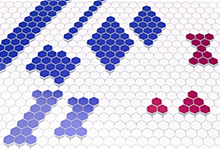CarboQuant pursues the development of a technology platform based on carbon nanostructures that can utilize exotic quantum effects in solid-state devices under everyday environmental conditions. In doing so, we want to create the conditions to free the upcoming second quantum revolution from the laboratory environment and make it accessible for everyday applications.

The generic term "quantum materials" covers matter in which strong confinement and/ or correlations lead to exotic physical properties associated with the quantization of particles (e.g. electrons, photons) and so-called quasiparticles (e.g. Cooper pairs, magnons, phonons, polarons, spinons). The resulting quantum effects can be used for highly sensitive sensor technology, metrology or new computing methods as well as secure communication.
Although extraordinary quantum properties occur in a wide variety of material systems, the almost "everyday" material graphite provides one of the most versatile platforms: Graphene - a single, one-atom layer of graphite - whose isolation and electronic characterization was honored with the Nobel Prize in Physics in 2010. If atomically precise pieces are cut out of this two-dimensional layer of pure carbon, the electronic, optical and magnetic properties of the so-called "nanographenes" produced can be adjusted almost at will [1]. These can then be used for a wide variety of applications.
Unfortunately, "cutting out" nanographene structures is not as easy as it sounds, because you have to cut with absolute atomic precision - and such "scissors" do not exist. Instead, we allow tailor-made molecules to react chemically on the surface of single crystals so that they self-assemble into the desired nanographene structures under ultra-high vacuum conditions [2].
Potential fields of application for graphene nanoribbons
Unlike in conventional electronic components, where the current (i.e. the charge of the electrons) is used to process information, quantum information technology aims to use the quantized magnetic moment of the electrons, the so-called spin. The trick is to couple and manipulate these spins in a controlled manner, for which nanographene structures are an ideal playground.
Like Lego bricks, structural units with different spins can be linked in a variety of configurations and configured into complex quantum spin systems [5].
Scanning probe microscopes are ideal instruments to study the interplay between atomic structure and quantum properties of carbon nanostructures. However, technological utilization requires addressing these properties without a complex laboratory infrastructure, which means integration into circuits. The development of methods for the integration of nanographene structures is therefore an important - and challenging - aspect of CarboQuant [7].
CarboQuant is based on the unique flexibility with which electronic, magnetic and optical properties can be designed on the basis of graphene. However, producing graphene nanostructures in a controlled manner, generating, measuring and addressing the desired quantum effects and then implementing them in technologically usable components requires progress in a wide range of areas. Thanks to substantial, long-term funding and an excellent network of specialized partner laboratories, we have been able to tackle this challenge with good prospects of success.
References:


